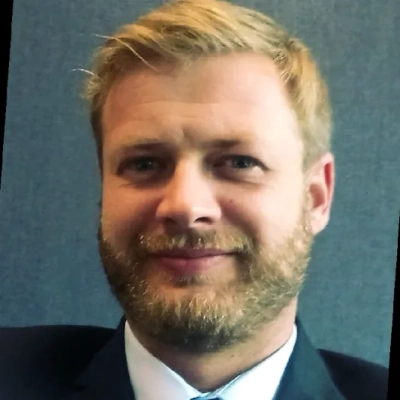Bootstrapping Success: Lessons in Efficiency from Entrepreneurs
Successful entrepreneurs have discovered powerful efficiency strategies that transform resource constraints into competitive advantages, as revealed by experts in the field. This comprehensive guide examines practical approaches ranging from communication frameworks and process documentation to workflow optimization and decision-making techniques. These battle-tested methods demonstrate how focused attention on operational efficiency creates sustainable business growth without requiring significant capital investment.
- Room Checklists Cut Home Cleaning Time
- Phone Triage Reduces Unnecessary Truck Rolls
- Quality Checklists Create Accountability Without Travel
- Centralized Dispatch Transforms Multiple Service Companies
- Supply Tracking Cuts Costs Through Direct Involvement
- Unified Framework Compresses Multiple Project Phases
- Reusable Components Replace Custom Development Work
- Upfront Plan Review Prevents Costly Project Overruns
- In-House Installation Team Slashes Window Delivery Time
- Brutal Qualification Framework Saves Wasted Time
- Partner Networks Provide Fleet Access Without Ownership
- Precise Measurement Consultations Eliminate Return Waste
- Time Scarcity Forces Focus on Impact
- Color-Coded Workflow Board Reveals Hidden Bottlenecks
- Full-Funnel Ownership Speeds Campaign Launch Time
- Technicians Become Consultants Through Health Checklists
- Document Core Processes Before Scaling
- Meditation Creates Emotional Distance for Better Decisions
- Batch Processing Revolutionizes Production Workflow
- Communication Strategy Maximizes Limited Resources
- Test Automation Replaces Manual QA Processes
Room Checklists Cut Home Cleaning Time
When I started Dashing Maids in 2013, I was doing everything myself–consultations, cleanings, scheduling, billing. I was drowning until I realized my biggest time drain was walking through homes without any system, which meant I’d miss things or take way too long.
I created detailed checklists for every room type and every service level. Sounds simple, but this one change cut our cleaning time by 30-40% per home while actually improving quality. My team knew exactly what to tackle and in what order, so we stopped backtracking or second-guessing. We could now clean 5-6 homes per day instead of 3-4 with the same crew size.
The other game-changer was tracking which tasks clients actually noticed versus what we spent time on that went unappreciated. Turns out people cared way more about kitchen counters and bathroom mirrors being spotless than perfectly organized linen closets. We reallocated our time to high-impact areas, and customer satisfaction scores went up even though we were working more efficiently.
My advice: map out where your time actually goes for a week, then ruthlessly cut or systematize anything that doesn’t directly create value for customers. I’m a total systems nerd, so this was honestly fun for me, but even if you hate spreadsheets, just time yourself doing your core service once and write down every step. You’ll spot the waste immediately.

Phone Triage Reduces Unnecessary Truck Rolls
Back in my early days at CWF Restoration, we were burning cash on unnecessary truck rolls and duplicate visits. Customers would call with questions, we’d send someone out “just to check,” and half the time it was something we could’ve handled remotely or batched with another visit.
I implemented a triage system where project managers like Chris, Jacob, and Eric now do a detailed phone assessment before dispatching crews. We use photos from customers’ phones and moisture meter readings we teach them to interpret. This single change cut our fuel costs by roughly 30% and let us handle 40% more jobs with the same crew size. One example: when a customer called worried about whether their walls were dry, instead of sending a tech immediately, we walked them through a simple visual check and scheduled equipment pickup during their next planned visit.
The bigger win was actually in our insurance coordination process. We started having PMs contact insurance companies during the initial assessment–before equipment even arrived–rather than after mitigation was complete. This eliminated the back-and-forth delays that used to stretch jobs by weeks. Customer reviews consistently mention how Chris or Jose “contacted the insurance and eased the stress,” which wasn’t happening before because everyone thought it was someone else’s job.
My takeaway: look at what’s forcing you to touch the customer multiple times when once would do. We mapped every customer interaction and found we were making 3-4 contacts per job when 1-2 strategic ones accomplished more. Those extra touchpoints felt like good service but were actually just inefficiency dressed up as attentiveness.

Quality Checklists Create Accountability Without Travel
When we started Altraco 40+ years ago, we couldn’t afford to fly to Asia every time there was a production issue. That constraint forced us to create what became our most valuable asset: detailed quality checklists and supplier scorecards that put accountability in writing before problems happened.
The breakthrough was documenting everything–specs, inspection timing, sign-off requirements–into a formal quality control program that both we and factories could reference. This sounds obvious now, but in the early days, most communication was verbal or scattered across faxes. We made one central document the source of truth, which eliminated the expensive back-and-forth of “I thought you meant this” conversations.
What others can steal from this: when you’re resource-constrained, force clarity upfront rather than fixing confusion later. We now track 5-6 KPIs (production defects, on-time delivery, corrective action response time) that we share openly with suppliers. It costs nothing except discipline, but it cut our quality incidents dramatically because everyone knows exactly what’s expected and how they’re measured.
The ROI was massive–fewer emergency shipments, fewer rejected containers, and factories that actually improved because they had clear targets. Bootstrapping taught us that prevention through documentation is infinitely cheaper than flying someone overseas to inspect damage.

Centralized Dispatch Transforms Multiple Service Companies
Running five service companies in Houston on zero outside funding meant I couldn’t afford to have separate dispatch systems, customer service teams, and admin staff for each business. I was bleeding money trying to manage American S.E.A.L. Patrol, American Trash Services, American Towing, and American Renovating as completely separate operations.
The breakthrough came when I centralized our scheduling and dispatch across all divisions under Apartment Services Group. One operations team now handles security patrol schedules, trash pickup routes, towing calls, and renovation appointments from a single dashboard. We went from needing 8-10 administrative staff to 3, cutting overhead by roughly 60% while actually improving response times.
The specific improvement others can steal: cross-train your teams across service lines instead of siloing them. My security patrol drivers now spot maintenance issues during rounds and flag them directly to our renovation crews. Tow truck operators report overflowing dumpsters to trash teams. This eliminated the gap between “noticing a problem” and “fixing it” that kills efficiency in property management.
It sounds obvious now, but bootstrapping forced me to see that apartment complexes don’t need five different vendors–they need one coordinated team that talks to itself. That realization turned my biggest liability (running multiple companies with limited cash) into my competitive advantage.

Supply Tracking Cuts Costs Through Direct Involvement
Great question. I’ve bootstrapped multiple businesses over the years, and the most brutal lesson came when I started Detroit Furnished Rentals without traditional funding despite having good credit.
The turning point was when I took over cleaning our units myself instead of hiring contractors. After two bathroom remodel contractors fell through and drained our budget, I realized we were hemorrhaging money on tasks I could handle. I took a week off, did the entire bathroom renovation myself, and that shifted my mindset permanently. Now I personally clean between guests, which saves us thousands monthly AND lets me control quality and track supply usage down to every roll of toilet paper.
The specific process improvement: I created a supply tracking system that cut our operating costs by roughly 30%. By doing the cleaning myself, I noticed we were overspending on basics–guests weren’t using nearly as much shampoo or paper towels as we were stocking. I adjusted our restocking schedule and quantities based on actual usage patterns per unit type (corporate travelers vs. weekend guests use supplies very differently). This data-driven approach only worked because I was in the trenches seeing it firsthand.
The lesson for others: find ONE expensive task you’re outsourcing and do it yourself for a month. You’ll either find you can keep doing it cheaper, or you’ll understand the process well enough to manage contractors properly. Either way, you’ll stop bleeding money on assumptions.

Unified Framework Compresses Multiple Project Phases
When I started CRISPx, I couldn’t afford separate teams for research, strategy, and creative. That constraint forced me to develop what became our DOSE Method™—a unified framework that compressed what used to be 3-4 separate phases into one integrated process.
The breakthrough came during the Element U.S. Space & Defense project. Instead of doing research, then strategy, then design as separate deliverables, we ran collaborative workshops where user personas informed the information architecture in real-time. We went from 12-week timelines to 6-week launches without sacrificing depth.
Here’s the specific change: we killed the “research report” entirely. Now our finding outputs are actual wireframes and site maps, not decks. When we identified that Element needed to serve engineers, quality managers, and procurement specialists, we immediately built those user paths into the navigation structure—not in a separate document nobody reads.
The efficiency gain was massive—we eliminated roughly 40 hours of “translation” work per project where insights sat in slides before becoming actual design decisions. Clients also loved seeing tangible progress from day one instead of waiting weeks for PowerPoints.

Reusable Components Replace Custom Development Work
Hey! I’ve been bootstrapping Webyansh for over 5 years, working with more than 20 clients across Healthcare, B2B SaaS, and AI companies, so I’ve had to get creative with efficiency from day one.
The biggest game-changer was ditching custom code for repetitive elements. When I worked on the Hopstack redesign, they needed advanced filtering for their resource library—something normally requiring expensive custom development. Instead, I built a system combining Webflow’s native CMS with minimal custom code snippets. This cut development time from weeks to days, and now I reuse that same filtering system across multiple client projects. What used to take 40+ hours now takes maybe 8.
The key was creating a personal library of reusable components and code snippets from each project. When SliceInn needed real-time property data integration, I adapted API connection methods I’d already figured out for another client. I’m essentially building my own internal toolkit that makes each new project faster than the last.
My advice: document everything you build, even the small stuff. That “one-off solution” you create today will save you days of work six months from now. I keep a Notion database of every component, interaction, and integration I’ve ever built—it’s become my most valuable business asset besides my actual skills.

Upfront Plan Review Prevents Costly Project Overruns
When I took over G&M from my father, we were doing everything manually–from design mockups to project tracking. We had great craftsmanship but zero systems, which meant we were constantly chasing details and bleeding time on administrative tasks that should’ve taken minutes.
The biggest shift was when I started reviewing architectural plans upfront for feasibility and budget before we even quoted. We used to just give estimates, then find issues mid-project that ate our margins. Now we catch problems on paper–like unrealistic cabinet depths or plumbing conflicts–before a single board is cut. This one change reduced our project overruns by probably 60-70% and made our quotes actually profitable.
I also pushed our team to handle multiple stages of each project instead of strict specialization. Our installer Warwick doesn’t just install–he understands the manufacturing process because he’s worked across all three generations with us. When he spots an issue on-site, he already knows how to solve it without calling back to the workshop. That cross-training came from necessity when we couldn’t afford to hire specialists for every role.
The lesson? Document your processes where they’re breaking down and look at your existing people before assuming you need more bodies. Les has been with us 26 years–his knowledge of our machinery means we don’t need expensive external maintenance contracts.

In-House Installation Team Slashes Window Delivery Time
When I started Perfect Windows & Siding over 20 years ago, I couldn’t afford showroom rent, dedicated sales teams, and separate installation crews like the big companies. The game-changer was when I decided to handle installations myself alongside selling–it forced me to actually understand every single pain point in the process.
The specific improvement that saved us thousands was eliminating the middleman entirely. Most window companies use subcontractors, which means they’re coordinating schedules, quality varies wildly, and someone’s got to pay that extra layer. I trained my own small crew and kept them on payroll year-round. Our installation time per window dropped from the industry average of 90+ minutes down to 30-60 minutes because we weren’t figuring things out on every job.
Here’s the kicker: that efficiency let us offer better warranties without the risk. When you know exactly how every window goes in and your own guys are doing it, you’re not gambling on some random sub’s work when you offer a lifetime warranty. We’ve had customers from 15+ years ago still call us directly when they need something, and I actually know what happened on their job.
The real lesson for anyone bootstrapping–whatever you can’t afford to outsource, become world-class at yourself first. Then when you do grow, you’ll know instantly if someone’s cutting corners because you’ve done it the right way a thousand times.
Brutal Qualification Framework Saves Wasted Time
When I bootstrapped PacketBase with zero outside funding, I quickly realized we were burning resources on proposals that went nowhere. We were creating custom solutions for every prospect, spending 10-15 hours per proposal with maybe a 20% close rate.
I implemented a brutal qualification framework upfront–three finding questions that revealed budget authority and timeline before we invested any solution design time. If prospects couldn’t answer those clearly, we’d offer a templated audit instead of custom work. Our proposal creation time dropped to 3-4 hours, and our close rate jumped to 45% because we were only building for serious buyers.
The bigger win was what this freed up. Instead of living in proposal hell, my team could focus on delivering exceptional results for existing clients, which became our primary growth engine. Referrals from 12 happy clients beat out 50 mediocre proposals every time.
At Riverbase now, I apply the same thinking–we don’t chase every lead. Our qualification process surfaces high-intent buyers fast, so we’re not wasting AI automation and human strategy on tire-kickers. Bootstrapping taught me that saying no efficiently is just as profitable as saying yes.

Partner Networks Provide Fleet Access Without Ownership
Great question–bootstrapping taught me that survival means killing redundancy fast.
Our biggest efficiency win came from building a tight network with other small operators instead of trying to own every vehicle ourselves. When we started, I thought we needed our own fleet for everything, but the capital and maintenance costs were brutal. Now we partner with vetted operators we trust, share workloads, and have instant backup. This let us take larger bookings we’d have turned away, and we’ve literally never cancelled a booking in our entire history–even when it meant taking a financial hit.
The specific process change: we shifted from trying to compete on fleet size to competing on relationships and reliability. Instead of sinking money into underused vehicles, we invested in building partnerships that give us access to everything from luxury sedans to full coaches without the overhead. Our customers get the same premium service, but our operating costs dropped significantly.
The lesson for others: don’t own what you can access through trusted partnerships. In transport, an empty bus costs you money every day–but a strong network of reliable operators gives you flexibility without the financial anchor. That mindset saved us during COVID when bookings dried up overnight.

Precise Measurement Consultations Eliminate Return Waste
Great question. When we opened K&B Direct in 2011, we had zero budget for fancy inventory management systems or a huge staff. We were literally running on fumes and had to figure out how to compete with big-box stores while keeping our “lowest possible price” promise.
The game-changer was cutting out our showroom floor model waste. We noticed we were spending thousands displaying full kitchen setups that just collected dust and tied up capital. Instead, we switched to a hybrid model–kept a small sample section and invested heavily in precise measurement consultations upfront. Our team now spends 30-40 minutes with each customer doing detailed planning before they buy, which sounds slow but actually eliminated about 60% of our returns and remake costs.
The real efficiency gain came from our “measure twice, order once” obsession. We train every team member to catch sizing errors during consultation rather than after installation. One customer in Schiller Park almost ordered cabinets for an 18-inch gap when they actually had 24 inches–catching that during our planning phase saved them $800 in returns and saved us a week of headaches.
My advice: identify where you’re bleeding money in rework or waste, then move that quality control earlier in your process. Spending more time upfront with customers costs us nothing but saves thousands on the backend. We’re talking lower inventory costs, happier customers, and way fewer 2AM panic calls about wrong measurements.

Time Scarcity Forces Focus on Impact
When I first started out, I thought being an entrepreneur meant working all the time. I filled every hour with tasks, meetings, and experiments that felt productive but weren’t moving the needle. Then I got ill, and suddenly I couldn’t work like that anymore. I had to compress everything into a few focused days each week, which felt impossible at first. But something surprising happened: I started making better decisions. When your time is cut in half, you stop doing things that only look busy and start doing the things that actually matter.
That shift changed everything. I automated what I could, delegated what I couldn’t, and stopped trying to build twelve features when one good one would do. I learned to measure success by impact, not activity. Ironically, that period of forced efficiency led to the company’s biggest growth and eventually to selling it. So if there’s one lesson worth sharing, it’s this: scarcity can be a gift. When you don’t have endless time, you build smarter, cleaner, and with much more intention.

Color-Coded Workflow Board Reveals Hidden Bottlenecks
One of the times I really feel like I was working on “all cylinders” came during the early years of my career, when I was simply too broke to hire extra help, or buy “workflow software.” I took a hodge-podge pile of job tickets, material slips, and phone messages and created ONE, color-coded, wall board made of plywood and paint. Every part of that board told us where each project was at, who was “on the hook” for what, and what was outstanding, down to the last hinge. Everyone in the company could look at it. There was nowhere to “hide” a bottleneck or an overlooked detail.
In hindsight, that board alone saved hours of time each week, and shaved at least 15% off the amount of wasted materials and duplicate orders. What I did not anticipate at the time was the way it relieved stress from each person’s “load,” and allowed us to handle a much larger volume of work with no additional employees. I think this applies to anyone, in any business, that will make their workflow transparent, honest, and simple enough that anyone can understand – with no specialized software required, just a willingness to question what actually serves the workflow.

Full-Funnel Ownership Speeds Campaign Launch Time
In our early days at Evergreen Results, I couldn’t afford separate teams for strategy, creative, and execution. So I built a system where every marketer had to own the full funnel–from initial strategy through creative development to performance tracking. This forced us to document everything in shared templates and create repeatable frameworks instead of reinventing the wheel each time.
The biggest process win was creating our “strategy-to-execution sprint” model. We condensed what used to take 3-4 weeks of back-and-forth into a single intensive week where the same person who builds the strategy also creates the ads and sets up tracking. For one food brand, this cut our campaign launch time by 60% and let us test twice as many creative variations, which directly contributed to hitting that 5-10x ROAS consistently.
The key insight: when you can’t hire specialists, force yourself to systematize. We turned our constraints into IP–those frameworks now let us move faster than agencies triple our size. Our clients get better results because there’s zero loss in translation between strategy and execution.

Technicians Become Consultants Through Health Checklists
While bootstrapping, we could not afford a dedicated sales team, forcing us to innovate our service delivery. We empowered our technicians with a simple ‘Client Health Checklist’ to discuss potential improvements during every service call. This turned our technical team into proactive consultants and our strongest source of new business from existing clients. It taught us that your best sales tool is often exceptional service and proactive communication.
Document Core Processes Before Scaling
When bootstrapping my first business, I initially tried to handle every function manually, which quickly led to operational chaos including missed deadlines and customer complaints. The turning point came when I implemented a systematic approach to document all core processes and identified repetitive tasks that could be automated. This disciplined focus on building proper systems before further scaling allowed our team to reduce customer complaints by 70% while simultaneously freeing up significant time previously spent on administrative busywork. I’d recommend any founder prioritize process documentation and automation early, even when resources are tight, as the efficiency gains compound dramatically as you grow.
Meditation Creates Emotional Distance for Better Decisions
Ironically, the skill that helped me beat startup burnout wasn’t about work — it was learning detachment. I started meditating daily out of sheer exhaustion, but it trained me to separate my identity from the company’s daily chaos. When a client left or a designer missed a deadline, I stopped reacting emotionally and started diagnosing system flaws instead. That shift from “I failed” to “the system failed” kept me sane and analytical.
This emotional distance gave me longevity. I could make sharper decisions because I wasn’t drowning in adrenaline. It’s underrated, but founders need to develop the ability to pause mid-fire and see the bigger picture — that’s how you survive years of unpredictability without burning out.

Batch Processing Revolutionizes Production Workflow
The beginning of my journey involved working alone with my sewing machine while developing my ideas. The operation required my complete dedication because I had no additional personnel and no funds to cover errors. I spent many late nights finishing straps by hand until I created a simple wooden jig that used fabric scraps to improve both alignment and tension. The basic tool proved effective because it allowed me to maintain high product quality while preventing exhaustion.
The introduction of batch processing became the key transformation that revolutionized my entire operation. I eliminated the practice of moving between design work, sewing, photography, and packaging throughout each day. I dedicated separate days to each production stage, which included flow work, beauty creation, and logistics management. The new approach provided my nervous system with essential relaxation time. Working according to personal energy patterns instead of following a to-do list schedule would help numerous creative professionals.

Communication Strategy Maximizes Limited Resources
When bootstrapping our startup with limited funds, we were forced to maximize the value of existing resources rather than simply throwing money at problems. We developed a disciplined approach to communication that prioritized highlighting team successes and maintaining transparency with stakeholders. This proactive communication strategy allowed us to build strong relationships with potential clients and team members without requiring significant financial investment. The process taught us that effective communication is often more valuable than marketing spend when resources are constrained.

Test Automation Replaces Manual QA Processes
Our initial client platforms required us to skip manual QA testing because we lacked the time due to burnout. The absence of manual QA time during our first few client platform launches required us to establish dependable automation systems, even though it required extended initial setup processes. The development of a reusable test harness through NUnit and mock services for third-party API simulation became a practical solution. The test automation system reduced our regression testing duration by more than half while providing us with the ability to deploy new builds without encountering unexpected system failures. The practice of disciplined testing delivers solid results even though it lacks excitement.





